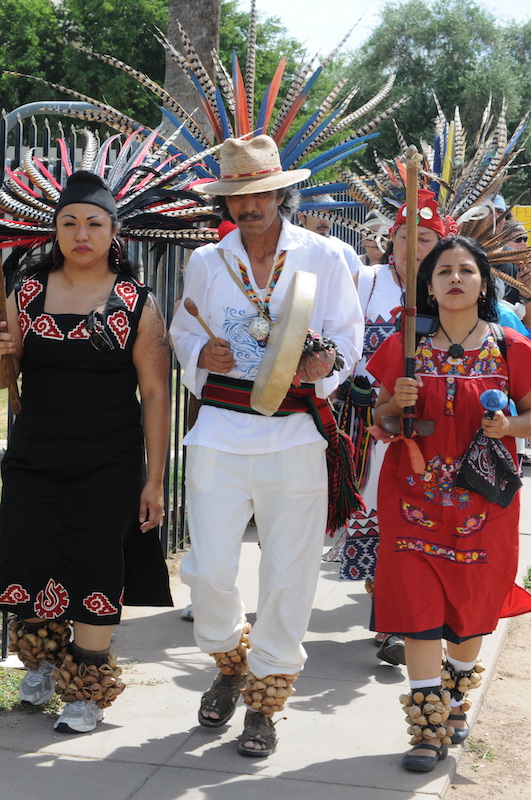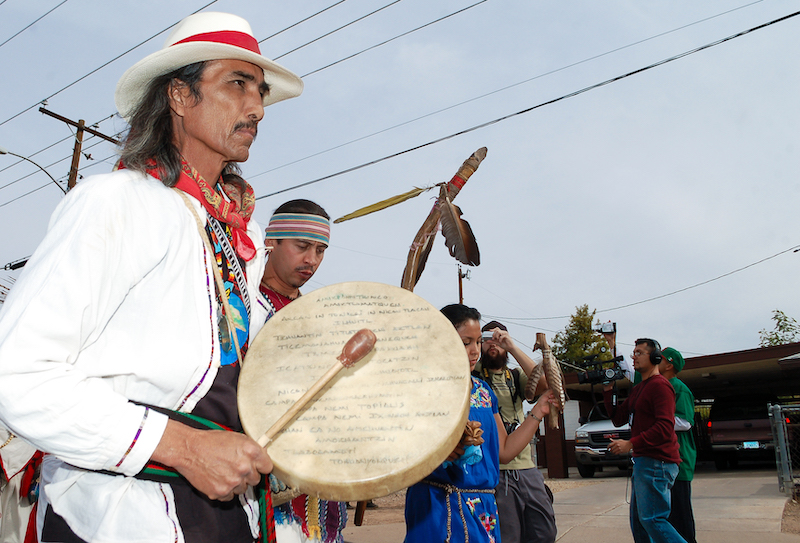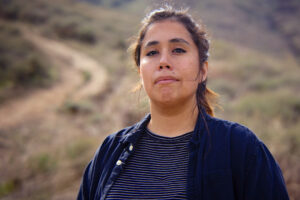(Phoenix, AZ) – Tupac Enrique Acosta, the tireless advocate for indigenous and human rights, passed away on November 9 at his home in Phoenix, Arizona. He was 71.
Widely recognized not only in the city that embraced him since the 1980s but across the continent and elsewhere, this unwavering crusader forged a respected and acknowledged path.
At the helm of the organization Tonatierra, which he co-founded and led until his death, Tupac Enrique Acosta played a prominent role, always avoiding the limelight and notoriety, focusing on serious work and effective actions rather than seeking media attention.
Though his modesty kept him away from headlines, among those advocating for human and indigenous rights, Tupac was not only a leader but also a respected and credible figure.
Locally, his commitment to demonstrations and protests—especially during marches against the SB 1070 law and other actions opposing legislation harmful to Arizona’s immigrant population—often placed him at the forefront, leading large crowds of protesters alongside Tonatierra members who performed rituals and indigenous dances along the route.
Much of the work of the San Antonio, Texas native took place in digital media, where he consistently disseminated information and press releases about the defense and advancement of the rights of indigenous peoples of the continent, known as Abya Yala according to the anti-colonialist nomenclature of the indigenous people.
In person, Tupac seized every opportunity to educate his listeners about the culture, beliefs, and customs of indigenous peoples, often accompanying his explanations with printed materials. He also utilized commercial radio to disseminate information about his activities and efforts.

Tupac Enrique Acosta’s journey
Reflecting on Tupac Enrique Acosta’s life takes us on an extraordinary journey of cultural immersion, family ties, and unwavering commitment to the rights of indigenous peoples. Summarizing his journey involves a profound task, but a general overview is sufficient to capture his tireless work.
Born on February 7, 1952, in San Antonio, Texas, he was shaped by his natural surroundings and the family traditions passed on by his parents, Julio Martínez Enrique and Herminia Tecihtzin Acosta.
His adolescence in San Diego, California, marked the beginning of his community work, initially linked to music and later involved in the Chicano Movement in the early seventies. By the end of that decade, his work took him to the agricultural fields of Arizona, in the town of Tolleson, amidst a strike by farmworkers.
As a founding member of Tonatierra, the organization’s growing work placed Tupac in the international context. Between 1987 and 1993, he traveled to Geneva, Switzerland, playing various roles before the United Nations Human Rights Commission, participating in the First Continental Encounter of Indigenous Pueblos and Nations in 1990, the Council of Indigenous Organizations and Nations of the Continent, as well as the Continental Indigenous Summits.
Tupac Enrique Acosta also participated in Continental Meetings in Ecuador, Guatemala, Peru, and Colombia. He served as a Judge of the International Court of Justice of the First Nations and represented Calpolli Nahuacalco at the United Nations Permanent Forum on Indigenous Issues.
His proficiency in English and Spanish positioned him as a key interpreter for communication among continental peoples, allowing their issues to transcend regional borders.

Tupac’s legacy and impact on indigenous rights
Faced with persistent health issues spanning more than a decade, Tupac Enrique Acosta exhibited remarkable resilience, unwavering inner strength, and an indomitable will that fueled his dedication to the cause until the very end.
Despite the personal hurdles he faced, his commitment to advocating for indigenous rights and human dignity remained unyielding. Tupac’s ability to persevere through adversity serves as a testament to his extraordinary spirit and reinforces the enduring impact of his legacy.
In closing this tribute to Tupac Enrique Acosta, we remember a man whose courage and dedication to the cause of indigenous and human rights transcend the limitations of popularity or business agendas.
Although his beliefs and approach were not always considered “business-friendly,” the breadth of his respect and recognition across the continent demonstrates that his legacy goes beyond political correctness and local trends.
Tupac did not settle for conventional activism; his unwavering commitment delved into the roots of justice and dignity. His challenging and uncompromising work positions him as a beacon in the struggle for the rights of indigenous peoples, guiding not only those who share his vision but inspiring all willing to challenge prevailing currents.
While Tupac Enrique Acosta’s path may not have been the easiest or the most popular, his legacy will endure as a powerful reminder that true greatness often lies in resistance to adversity.
His memory stands as a source of inspiration for future generations, reminding us that the defense of human rights and the preservation of cultural diversity are eternal endeavors, transcending geographical boundaries and temporal trends.
In this farewell, we celebrate the life of a man whose impact will endure far beyond local borders and the currents of the moment.
© 2023 - 2024, Eduardo Barraza. All rights reserved.





